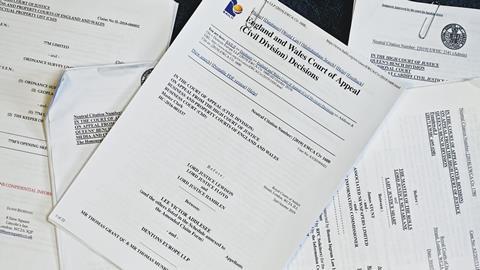In the movie Catch Me If You Can, the serial fraudster played by Leonardo DiCaprio learns to pose as a lawyer by watching TV dramas. He comes unstuck when, after delivering an impassioned Perry Mason-style speech laden with high-flying references to the Bill of Rights, the judge tells him there is no jury: he is here simply to make a routine application.
Anyone who has had dealings with a certain type of litigant in person will know that the scenario is not too far-fetched. Lay people generally think courtrooms are more dramatic places than they really are. But the misapprehension doesn't just affect watchers of TV soaps: it can also apply to those whose knowledge is gained by reading published court judgments. Especially if that reading is done by computers.
Hence the main reservation about today's otherwise welcome announcement that the National Archives is to take on the duty of curating a national free online repository of court judgments. The Ministry of Justice's statement refers to setting up a one-stop shop for 'important' judgments. To be of real value in promoting understanding of what happens in the justice system, the repository must also include the 'unimportant' - the quotidien drudge of routine decisions that will never make the Law Reports.
The lack of a comprehensive archive of pretty much any forum lower than the Supreme Court is one of the main shortcomings of the current patchwork arrangement for disseminating judgments. Even in the Employment Tribunal, which since 2017 has offered the most comprehensive archive of judgments, the record is far from complete. In their important paper Online Tribunal Judgments and the Limits of Open Justice, Zoe Adams and colleagues reveal that only 70% or so of all tribunal judgments are available online.
As elsewhere, the published sample will be heavily biased towards those that individual judges regard as significant or interesting - which is not a good guide for lay claimants researching whether to bring a case. 'Even if online judgments are representative of decided cases in the ETs, they are highly unlikely to be representative of all employment disputes,' the paper notes.
This publication bias towards the 'interesting' has other important consequences. It has already been at the centre of the controversy over the government's plans to limit so-called Cart reviews as part of its public law reform plans. It also renders highly problematic any attempt to train artificial intelligence programs to predict outcomes on the basis of past judgments. (Because of BAILII's user conditions, a great deal of this work is going on surreptitiously, which raises further questions about transparency and accountability.)
With these factors in mind, the MoJ and National Archives should make an early commitment to creating a comprehensive repository, at all levels. The inevitable conflict between open justice and the malign uses to which data may be put - the main subject of the Adams paper - must be tackled early.
And, as Adams and colleagues state, if it is not possible to publish a complete set of judgments, the criteria for picking those that are made public must be transparent. 'Because the judge thought it was interesting' is certainly not enough.





































2 Readers' comments